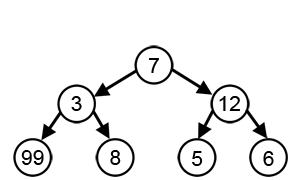GREEDY ALGORITHM AND IT’S USE
Imagine you are going for hiking and your goal is to reach the
highest peak possible. You already have the map before you start, but there are
thousands of possible paths shown on the map. You are too lazy and simply don’t
have the time to evaluate each of them. Screw the map! You started hiking with
a simple strategy – be greedy and short-sighted. Just take paths that slope
upwards the most. This seems like a good strategy for hiking. But is it always
the best?
After the trip ended and your whole body is sore and tired, you
look at the hiking map for the first time. Oh my god! There’s a muddy river
that I should’ve crossed, instead of keep walking upwards. This means that a
greedy algorithm picks the best immediate choice and never reconsiders its
choices. In terms of optimizing a solution, this simply means that the greedy
solution will try and find local optimum solutions - which can be many - and
might miss out on a global optimum solution.
FORMAL DEFINATION
“Greedy algorithms aim to make the optimal choice at that
given moment. Each step it chooses the optimal choice, without knowing the future.
It attempts to find the globally optimal way to solve the entire problem using
this method.”
WHY ARE GREEDY ALGORITHMS CALLED GREEDY?
We call algorithms greedy when they utilize the greedy property. The greedy property is:
At that exact moment in time, what is the optimal choice to make?
Greedy algorithms are greedy. They do not look into the future to decide the global optimal solution. They are only concerned with the optimal solution locally. This means that the overall optimal solution may differ from the solution the algorithm chooses. They never look backwards at what they've done to see if they could optimize globally. This is the main difference between Greedy and Dynamic Programming.
To be extra clear, one of the most Googled questions about greedy algorithms is: "What problem-solving strategies don't guarantee solutions but make efficient use of time?" .The answer is "Greedy algorithms". They don't guarantee solutions, but are very time efficient.
PROPERTIES OF GREEDY ALGORITHM
1. Greedy Choice Property: A global optimum can be reached by selecting the local optimums.
2. Optimal Substructure Property: A problem follows optimal substructure property if the optimal solution for the problem can be formed on the basis of
the optimal solution to its subproblems.
Little Technical Part
EXAMPLES/PROBLEMS ON GREEDY ALGORITHM
The problem statement for Activity Selection is
that "Given a set of n activities with their start and finish times, we
need to select maximum number of non- conflicting activities that
can be performed by a single person, given that the person can handle only one
activity at a time." The Activity Selection problem follows Greedy approach i.e.
at every step, we can make a choice that looks best at the moment to get the
optimal solution of the complete problem.
Activity-Selection(Activity, start, finish)
Sort Activity by finish times stored in finish
Selected = {Activity[1]}
n =
Activity.length
j =
1
for
i = 2 to n:
if start[i] ≥ finish[j]:
Selected = Selected U {Activity[i]}
j = i
return
Selected
Complexity
Time Complexity:
When activities are sorted by their finish time: O(N) When activities are not sorted by their finish time, the time complexity is O(N
log N) due to complexity of sorting.
Greedy approach vs Dynamic
programming
A Greedy algorithm is an algorithmic paradigm that builds up a
solution piece by piece, always choosing the next piece that offers the most
obvious and immediate benefit. So the problems where choosing locally optimal
also leads to a global solution are best fit for Greedy.
For example, consider the Fractional Knapsack Problem.
The local optimal strategy is to choose the item that has maximum value vs
weight ratio. This strategy also leads to global optimal solution because we
allowed taking fractions of an item.
Dynamic programming is mainly an optimization over
plain recursion. Wherever we see a recursive solution that has repeated calls
for the same inputs, we can optimize it using Dynamic Programming. The idea is
to simply store the results of subproblems so that we do not have to re-compute
them when needed later. This simple optimization reduces time complexities from
exponential to polynomial. For example, if we write a simple recursive solution
for Fibonacci Numbers, we get exponential time complexity and if we optimize it
by storing solutions of subproblems, time complexity reduces to linear.
It is quite easy to come up with a greedy algorithm (or even
multiple greedy algorithms) for a problem. Analyzing the run time for greedy
algorithms will generally be much easier than for other techniques (like Divide
and conquer). For the Divide and conquer technique, it is not clear whether the
technique is fast or slow. This is because at each level of recursion the size
of gets smaller and the number of sub-problems increases.
The difficult part is that for greedy algorithms you have to
work much harder to understand correctness issues. Even with the correct
algorithm, it is hard to prove why it is correct. Proving that a greedy
algorithm is correct is more of an art than a science. It involves a lot of
creativity. Usually, coming up with an algorithm might seem to be trivial, but
proving that it is actually correct, is a whole different problem.
Regards,
Shrawani Shinde



Article is really informative and explains everything on the point .
ReplyDeletethank you shivansh!
DeleteVery informative article.
ReplyDeleteExplained everything on the point.
👍👍👍👍
ReplyDeleteAbsolutely well written in orderly fashion!
ReplyDeleteA very well-written and explained article. This article explains everything about the algorithm precisely.
ReplyDeleteVery Informative 👍👍👏
ReplyDeleteGreat work girl and very informative.
ReplyDeleteVery informative and useful blog....great👍🏻
ReplyDeleteA one good and fair article about Greedy Algorithm.
ReplyDeleteVery helpful
ReplyDeleteGood Stuff. Very informative
ReplyDeletePerfectly frame... Great work!!
A well equipped work .
ReplyDeleteKeep it up!!
Very helpful!
ReplyDeleteThis comment has been removed by the author.
ReplyDeleteGreat Post
ReplyDelete